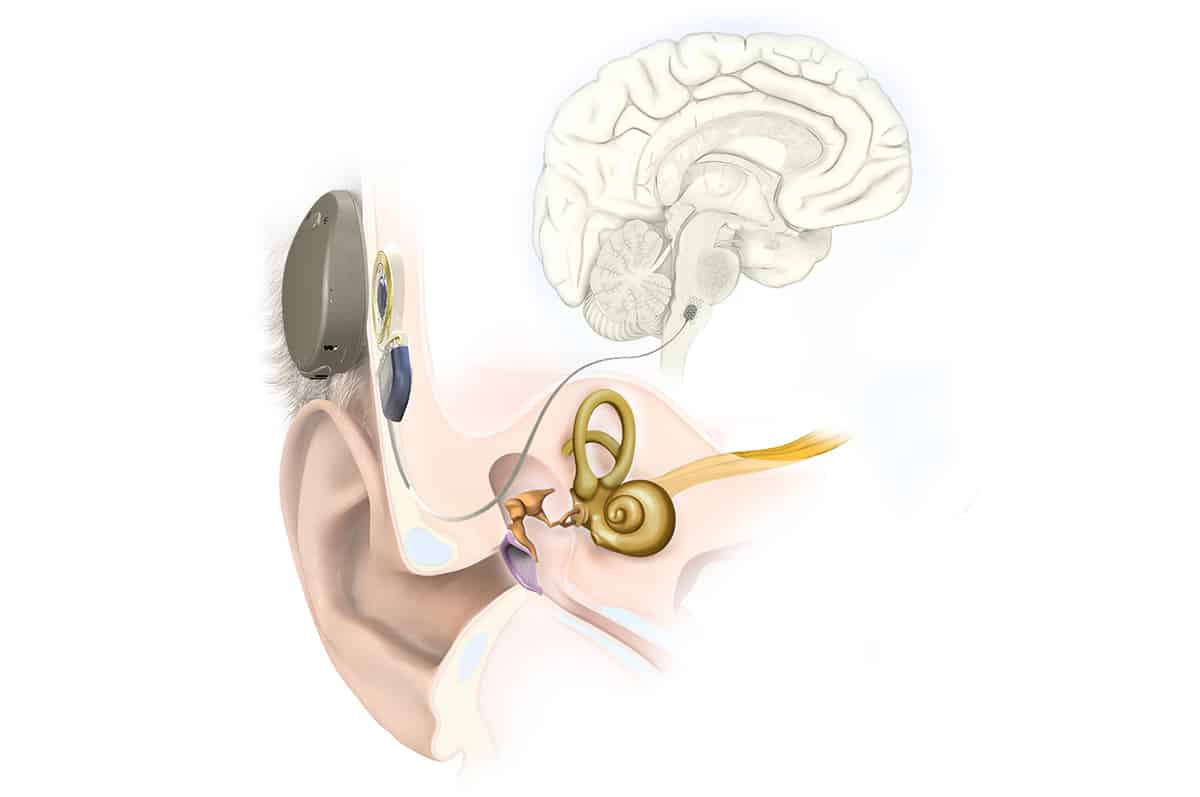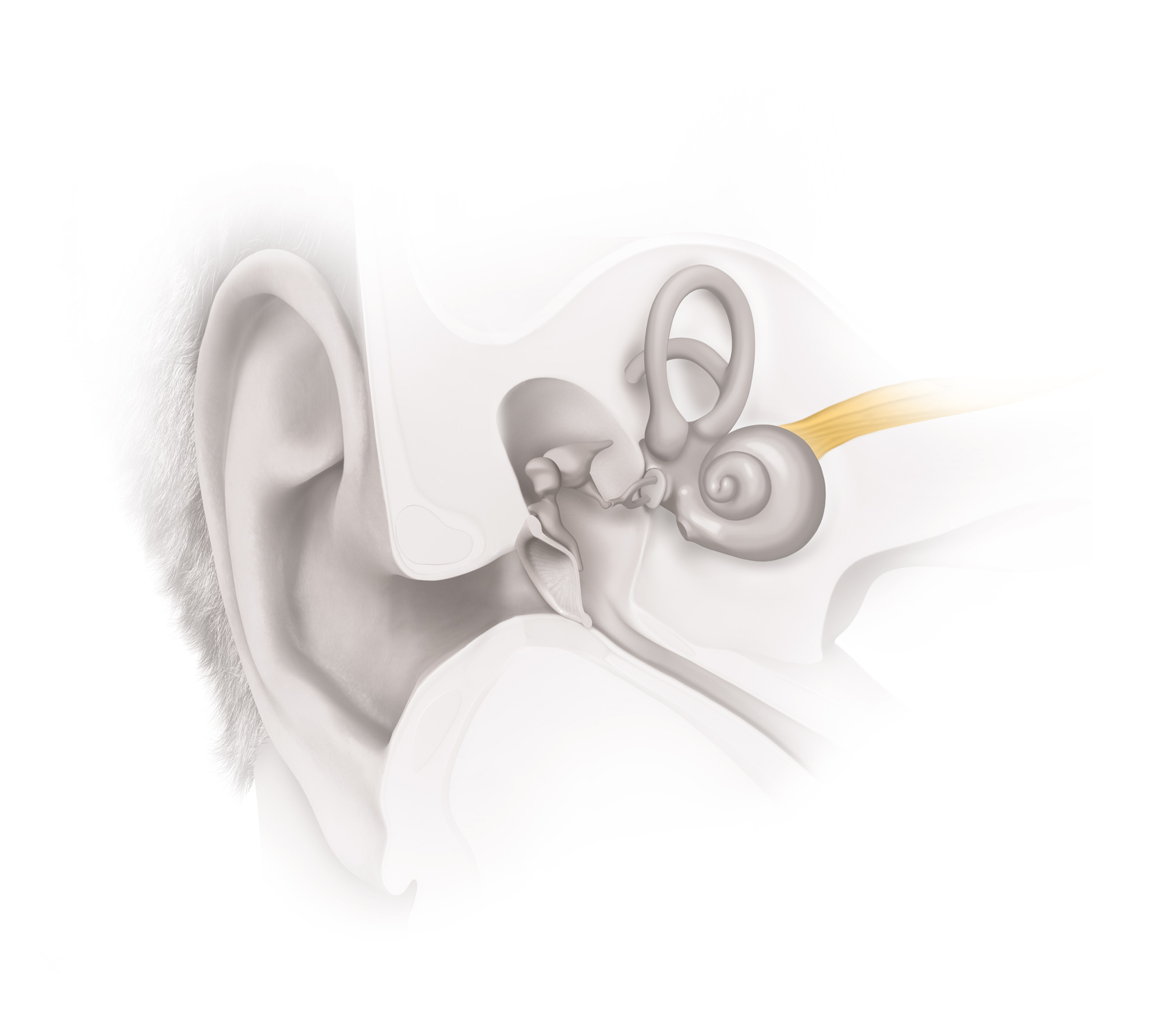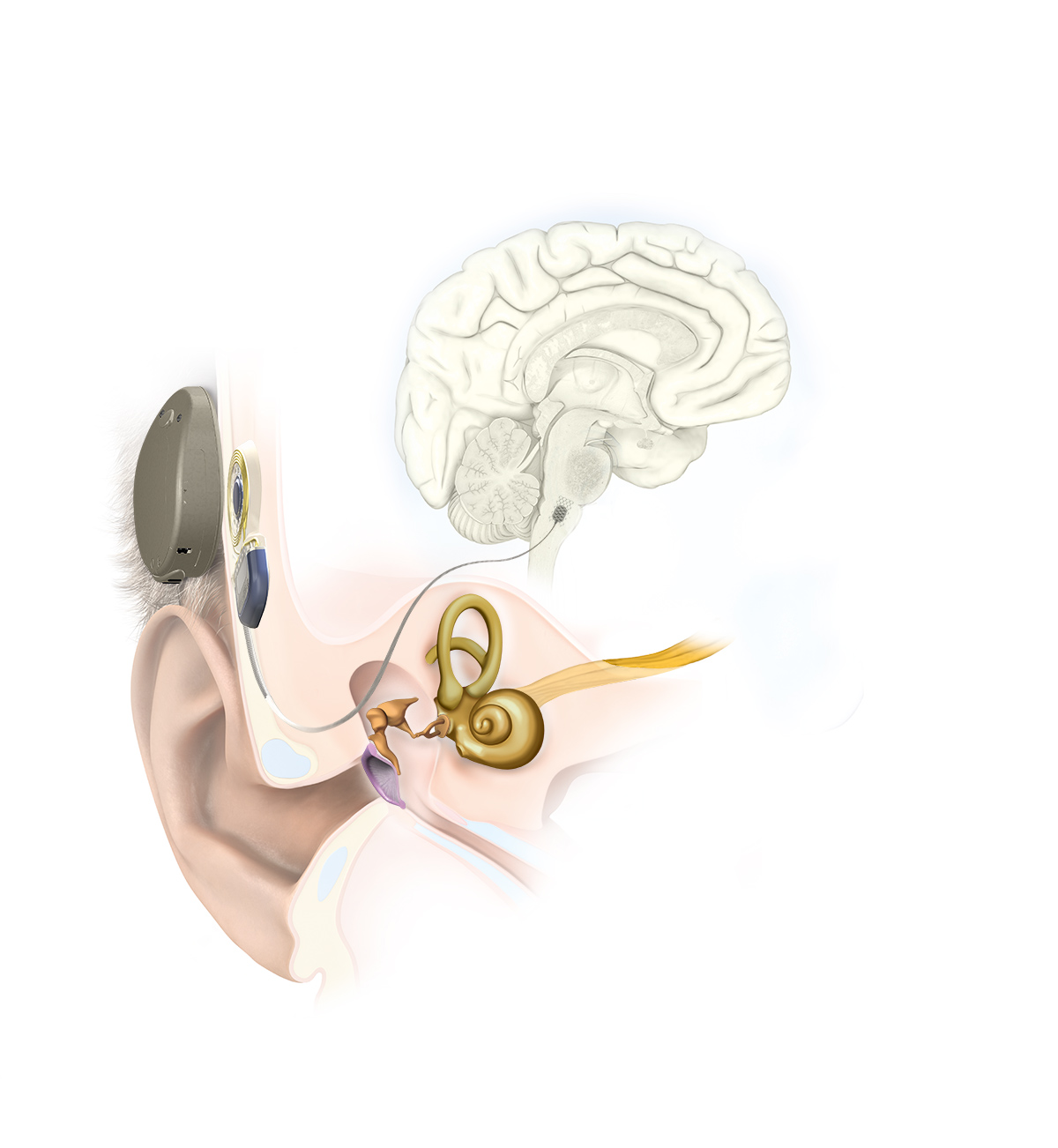MED-EL
Published Aug 01, 2014
What Does Neurofibromatosis Type II Have to do With Hearing Loss?

Most types of hearing loss are due to something happening between the outer ear and cochlea. Sensorineural hearing loss, conductive hearing loss, and mixed hearing loss are all examples of a hearing loss that is due to something happening in or before the cochlea. However, there are also types of hearing loss due to something happening between the cochlea and the brain. These are called retrocochlear hearing losses, and one of the most common is associated with a genetic condition called Neurofibromatosis Type II, or NFII.
An Auditory Brainstem Implant is a type of hearing implant used to help treat hearing loss due to NF II.
Retrocochlear Hearing Loss
“Retrocochlear” is a word which means behind the cochlea, and therefore retrocochlear hearing loss that is caused by something happening behind the cochlea. Specifically, this refers to organs like the auditory nerve and the brain itself. Here’s a graphic showing where the auditory nerve is located:
You can see here that the auditory nerve is highlighted. It’s the auditory nerve that helps carry electrical signals from the cochlea towards the brain, where they are interpreted as sound, and it just happens that the auditory nerve is what’s often affected by Neurofibromatosis Type II.
Neurofibromatosis Type II
NF II is a genetic condition that usually causes non-cancerous tumors to appear on the auditory nerve. It affects approximately 1 in 33,000 people (0.003%) depending on the part of the world REF. Because these tumors, sometimes called schwannomas or acoustic neuromas, appear on the auditory nerve they can have a significant influence on hearing.
It affects different people differently. Some may be born with numerous schwannomas already on the brainstem, while others may develop them later in life. Regardless of when it appears, NF II typically causes tinnitus, hearing loss, and balance problems that can develop over time.
Although there is no cure for NF II, it can be treated. A common treatment involves surgically removing the tumors on the auditory nerve, and this where the auditory brainstem implant comes in.
Auditory Brainstem Implant
An auditory brainstem implant, or ABI, is a type of hearing implant used by individuals with NF II. It’s sort of like a cochlear implant, but instead of an electrode array inserted into the cochlea it has an electrode array that is attached to the auditory nerve. The auditory nerve is a part of the brainstem and is located between the auditory nerve and the brain, and therefore an ABI completely bypasses the cochlea.
Here’s a picture of what an ABI electrode array looks like:
Each of the twelve silver circles is a single electrode contact and each contact is responsible for stimulating one channel of sound, similar to each of the twelve channels from a CI.
An ABI’s electrode array is attached to the auditory nerve during the same surgery in which the tumors on the auditory nerve are removed. Because it’s more complex than just inserting an electrode array into the cochlea, the surgery takes approximately 12 hours depending on the number of tumors.
During surgery the surgeon can use tools to determine when he or she has placed the electrode array in the right position. This is important because the auditory brainstem doesn’t follow the tonotopic principle in the same way that the cochlea does, and therefore the surgeon needs to check to see what frequency of sound each electrode stimulates.
MED-EL
Was this article helpful?
Thanks for your feedback.
Sign up for newsletter below for more.
Thanks for your feedback.
Please leave your message below.
Thanks for your message. We will reply as soon as possible.
Send us a message
Field is required
John Doe
Field is required
name@mail.com
Field is required
What do you think?
© MED-EL Medical Electronics. All rights reserved. The content on this website is for general informational purposes only and should not be taken as medical advice. Contact your doctor or hearing specialist to learn what type of hearing solution suits your specific needs. Not all products, features, or indications are approved in all countries.
MED-EL





